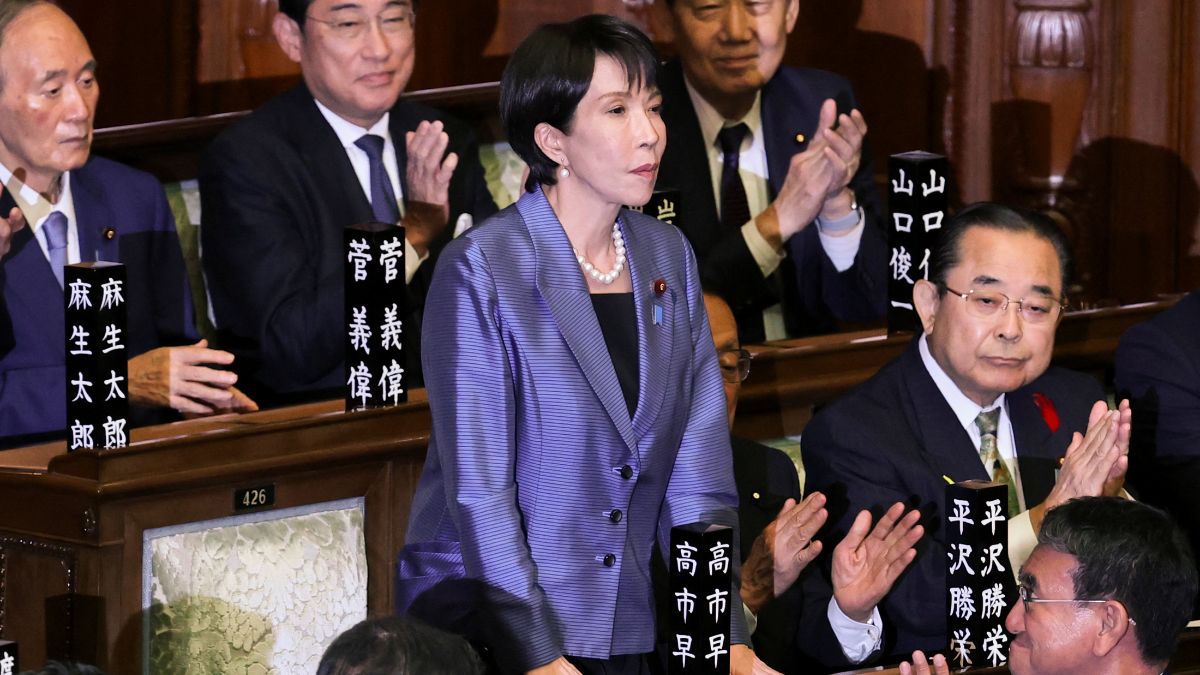From ‘Abenomics’ to ‘Takaichi trade’, Japan enters a new era
 Leader of Japan's ruling Liberal Democratic Party (LDP) Sanae Takaichi reacts as she receives applause after being elected as prime minister, at the Lower House of Parliament in Tokyo, Japan | REUTERS
Leader of Japan's ruling Liberal Democratic Party (LDP) Sanae Takaichi reacts as she receives applause after being elected as prime minister, at the Lower House of Parliament in Tokyo, Japan | REUTERS
Japan set a historic milestone on October 21, 2025, as Sanae Takaichi, leader of the ruling Liberal Democratic Party (LDP), was elected by parliamentary vote to become the country’s first female prime minister.
Takaichi-san secured 237 votes in the Lower House, eliminating the need for a runoff and cementing her leadership at a pivotal moment for Japan’s political and economic future.
Her victory comes with the backing of the Japan Innovation Party, after the longtime LDP coalition partner Komeito withdrew, plunging the country into political limbo.
The new coalition provides enough seats to form a minority government, restoring stability amidst deep public concern over the rising cost of living and a weakening yen.
Market reaction was swift and positive, with Japan’s Nikkei 225 index reaching fresh highs as global investors anticipate a wave of economic reforms and stimulus, commonly referred to by analysts as the “Takaichi trade”.
Economic and financial implications
Takaichi-san’s ascent could be a continuation, and or even an intensification, of “Abenomics”—the signature policy mix of former prime minister Shinzo Abe. This framework is based on aggressive monetary easing, fiscal stimulus, and targeted structural reforms designed to lift Japan out of decades-long stagnation.
Her government is expected to implement further tax cuts, including a two-year suspension of the food consumption tax, to cushion households against inflation.
Free high school education and a push to reduce parliamentary seats are also on her agenda, reflecting proposals championed by coalition partner Japan Innovation Party.
Takaichi-san is likely to appoint Satsuki Katayama as finance minister, a move set to reinforce her commitment to expansionary policies and economic revitalisation in the face of a turbulent forex market (thanks to Trump and co).
Investors and economists are watching the Bank of Japan closely, as Takaichi-san is known for her criticism of interest rate hikes. She has signalled that the central bank should maintain its ultra-loose stance, prioritising growth over currency stability and debt sustainability.
The Japanese yen has already weakened to 150.96 against the US dollar as expectations of a strong push outweigh concerns about fiscal discipline.
India and the Japan connection
Japan’s leadership change holds major implications for India. Takaichi-san’s priority for strengthening supply-chain self-sufficiency in areas such as semiconductors, artificial intelligence, and energy resonates with Narendra Modi-led Centre’s own “Atmanirbhar Bharat” ambitions.
ALSO READ | What is Japan hoping to achieve by boosting its partnership with India?
Japanese investment could increase in high-tech manufacturing and infrastructure projects in India, as both countries seek to cut their dependence on China.
Takaichi-san is also known for her love for free trade and economic partnership within the broader Asian region. This could mean that she is likely to back ongoing strategic and economic collaboration with India, especially in defence and digital sectors.
The opinions expressed in this article are those of the author and do not purport to reflect the opinions or views of THE WEEK.
Business